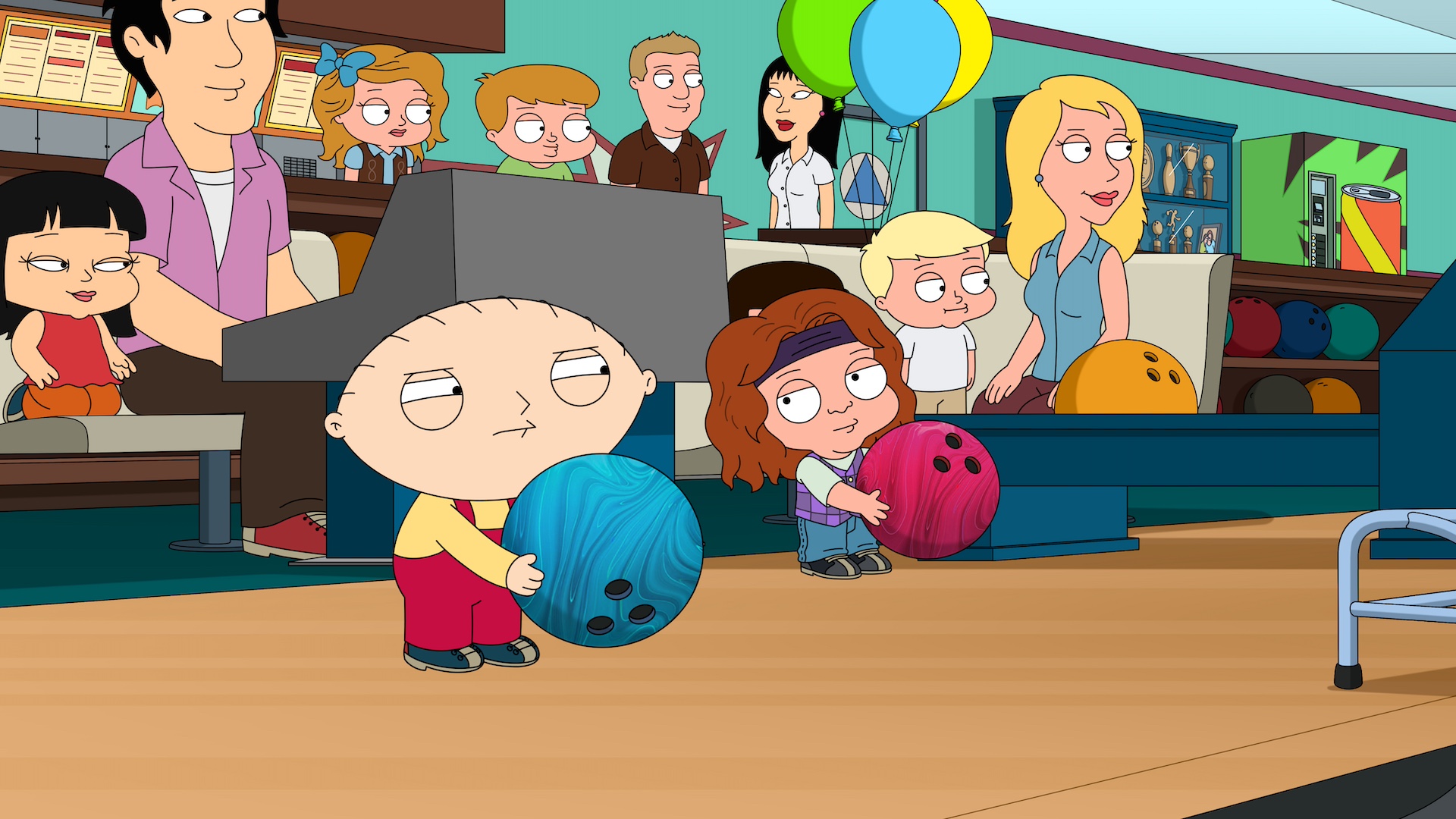
It seems today that all you see is cartoon shows with little continuity.
Nevertheless, Seth MacFarlane’s Family Guy, as obscene and silly as it may be, decides to switch up its “canon” every so often. Whether it’s due to the passing of a cast member, attempts at a ratings stunt, or (unintentional) acts of progressiveness for its characters’ development, the Griffin family’s world within Quahog for the past 25 years of airing has only expanded.
Here are some of the most significant canon changes in Family Guy history.
Revival With YOLO Energy
Due to low ratings, Family Guy faced the cancellation gun early into its lifespan. But in its death, the great bird-is-the-word got around via DVD sales and rerun airings on Adult Swim. Thus, in its rebirth on Fox in 2005, the show became cruder, bloodier, and edgier than ever, both in its art style and spirit. The explosive spirit was such a lightning-in-the-bottle success; you can see why imitators always come out of the woodwork.
Meg’s Voice Change
Any novice Family Guy viewer venturing back to the first season will most likely be startled by Meg Griffin’s voice sounding like mother-fetching Lacey Chabert. Well, you won’t believe this, but … that’s because it’s mother-fetching Lacey Chabert!
Ms. Gretchen Weiners was once the show’s punching bag, Meg. Since Chabert was busy with schoolwork, filming Party of Five, and voicing Eliza Thornberry back in 1999, she ultimately dropped out from the series. In her place came Mila Kunis, who had just started on That ‘70s Show, and has been with the Griffins ever since. Much later on, the show’s endless purple cap-wearing, short-end-of-the-stick-holder got to meet her originator in the episode “Griffin Winter Games.” In it comes a gag where Meg faces Chabert in a skiing competition and has a “shut-up Meg” off with her. Never forget where your voice came from.
Cleveland’s Divorce With Loretta
The Cleveland and Loretta Brown divorce saga started by the perfectly titled “The Cleveland-Loretta Quagmire” episode might’ve been the first canonical gear shift within the series’ history. After Loretta cheats on Cleveland with Quagmire, Cleveland ends up leaving Loretta and starting anew. This went on for several seasons, long before he reunited with Donna in The Cleveland Show. As well handled as Cleveland’s arc was, investigating the repercussions of a marital affair within Peter’s friend unit, Loretta’s backdoor exit happened because Alex Borstein didn’t want to voice her anymore –– long before the industry had the sense not to have white actors voice Black people anymore. If only they didn’t kill the character as maliciously as they did.
Bonnie Swanson Finally Gives Birth
In Family Guy‘s early seasons, it seemed like Joe’s pregnant wife Bonnie would have that belly bump till the end of time. It was just one of those cartoon things we had to deal with, like lack of aging. But eventually, enough was enough, and in season 7’s “Ocean’s Three and a Half,” that baby, little Susie Swanson, was born. They didn’t do much with the character other than have her kick Stewie’s ass as the setup for the later season 7 episode “Stew-Roids,” and that’s about it. But hey, Bonnie doesn’t have to deal with that eternal fetus within her.
Cleveland Returns
The Cleveland Show. It happened. And then it didn’t. In its time, Family Guy tried to fill in Cleveland’s place, mainly by having another token Black guy sit in his place. In came Jerome, an ex of Lois who ended up not having any character outside of being Black with a fro. His arrival during the weird 2010s era of the series made way for many outdated race jokes. But when Cleveland got canceled, he returned to Family Guy with his whole family. And the Family Guy team loves to poke fun at its failure whenever it has a chance.
For a Fox spinoff, The Cleveland Show lasting as long as it did (four seasons and 88 episodes) was an impressive feat. It’s weird when his family appears now because none of the kids, Cleveland Jr. included (voiced by recurring actor Kevin Michael Richardson), have any speaking lines. In fact, Donna is the only returning Cleveland Show character who often has any voice lines in these new episodes. I have no complaints because at least Sanaa Lathan gets an easy source of income til the end of time.
Season 9 Perma-Deaths
How else can one usher in the HD era of television in a season premiere? By doing an hour-long Agatha Christie-styled murder mystery special, of course! The season 9 opener titled “And Then There Were Fewer,” a play on Christie’s “And Then There Were None,” involved the Griffins and their friends invited to James Woods’ mansion for a fancy dinner, but a murderer is on the loose, and many canonical deaths occur. Even MacFarlane tweeted, saying, “Tonight’s episode is canon.” So you know it was real. Many recurring characters, including James Woods, Mort’s wife Muriel Goldman, Jillian’s husband Derek Wilcox, and Channel 6’s former co-host Diane Simmons––who turned out to be the murderer–– all bit the bullet, never to return. Except for James Woods, who was revived by paramedics in the following season. Well until…
James Woods is Sent Packing
After years of canonically beefing with the Griffins, James Woods’ real-world persona became as chaotic and problematic as his cartoon counterpart. Following the season 15 episode “Inside Family Guy,” the series parted ways with James Woods for good, even renaming its fictional in-universe high school named after him to Adam West High School. Talk about being out of the Woods and moving onto greener pastures.
The Passing of Mayor Adam West
When the legendary Adam West passed away in 2017, Seth MacFarlane said, “Family Guy has lost its mayor, and I have lost a friend.” To say that the loss of West’s beloved as a fictionalized version of himself (and the Mayor of Quahog), left a dent on the series is an understatement. Since animation is a long process, West recorded his lines for season 16. But once season 17 rolled along, he also canonically passed. And in his honor, during the season finale “Adam West High” they … well, it’s self-explanatory.
Stewie’s Sexuality
The exploration of Stewie’s sexuality was one of the wildest, most unintentionally progressive things that Family Guy has done. Since season 6, the shows’ writers started delving into Stewie’s queerness that, albeit ambiguous given his clear adoration of hunky men and confident girls his age, is queer nonetheless. The best part about it is that he’s optimistic about it. Even to this day, some of the best episodes in recent memory, including “Send in Stewie, Please” and “The Talented Mr. Stewie,” both written by Gary Janetti, address his sexuality in conjunction with his psychotic personality. Stewie’s sexuality is always going to be ambiguous, but queer defines all things under the LGBTQ+ umbrella. Today the British baby genius has become a prominent queer character in television, and it would be bloody hellish without him.
“Road To’s” Enhance Stewie and Brian’s Relationship
Since the beginning, Brian has been the only one who understands Stewie. After the first few “Road To” episodes centered on Stewie and Brian’s comedic dynamic, the writers developed their chemistry further. They succeeded to the point that they’re the series’ central buddy comedy duo and emotional soul. Brian may be relegated to the role of the talking family dog, but to Stewie, he’s everything: a brother, a dog, an enemy, a friend, and a father. Whenever an episode centers around their misadventures throughout space and time, you know a zany time will be had.
The post Family Guy: The Biggest Canon-Changing Moments appeared first on Den of Geek.







